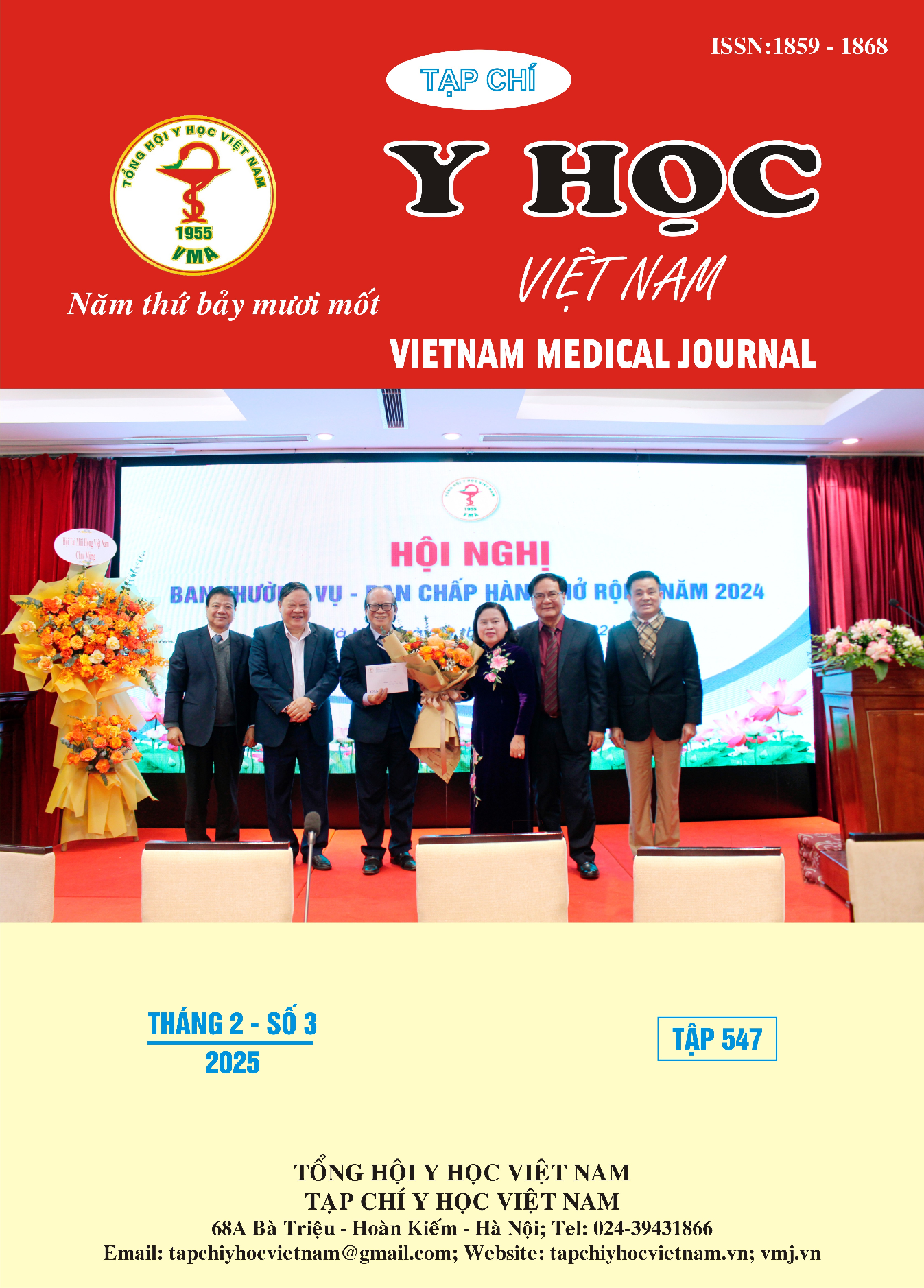STUDY OF THE RELATIONSHIP BETWEEN THE LEFT VENTRICULAR ARTERIAL COUPLING AND ECHOCARDIOGRAPHIC PARAMETERS IN THE PATIENTS WITH END – STAGE CHRONIC KIDNEY DISEASE
Main Article Content
Abstract
Objective: To investigate the relationship between the left ventricular-arterial coupling index (VAC) and some echocardiographic parameters in patients with end-stage chronic kidney disease (ESKD). Subjects and methods: The study included two groups: the diseased group: 67 patients diagnosed with ESKD and undergoing treatment at Military Hospital 103 from August 2023 to December 2023. Control group: 32 healthy individuals without concomitant cardiovascular diseases. Results: VAC of the ESKD group (3.16 ± 0.94 mmHg/ml and 0.72 ± 0.19) was higher than in the control group (2.76 ± 0.75 mmHg/ml and 0.6 ± 0.08) (p=0.04 and p=0.003). VAC in the Dd ³ 50 mm group was higher than that in the Dd < 50 mm group (0.76 ± 0.22 and 0.69 ± 0.17, p = 0.02). VAC in the Ds ³ 35 mm group was also significantly increased than in the Ds < 35 mm group (0.84 ± 0.23 and 0.67 ± 0.16, p < 0.01). VAC was correlated positively with GLS (r=0.42, p < 0.001). VAC in the normal GLS group was significantly lower than that in the reduced GLS group. VAC of the EF < 50% group was higher than that of the EF ≥ 50% group (0.98 ± 0.21 and 0.68 ± 0.16, p < 0.01). Conclusion: VAC in end-stage chronic kidney patients was significantly higher than that in the control group. When the left ventricle dilated, VAC increased. VAC also had a positive correlation with GLS. The more EF decreased, the more VAC increased, demonstrating the mismatch between the left ventricle and the artery.
Article Details
Keywords
End-Stage Chronic Kidney Disease, arterial elasticity (Ea), end-systolic left (Ees) and ventricular-arterial coupling (VAC)
References
2. Marwick T.H., Gillebert T.C., Aurigemma G. et al. (2015). Recommendations on the use of echocardiography in adult hypertension: a report from the European Association of Cardiovascular Imaging (EACVI) and the American Society of Echocardiography (ASE), European Heart Journal-Cardiovascular Imaging, 16(6): 577-605.
3. Lane A.D., Wu P.-T., Kistler B. et al. (2013). Arterial stiffness and walk time in patients with end-stage renal disease, Kidney and Blood Pressure Research, 37(2-3): 142-150.
4. Nguyễn Thị Vân Anh, Bùi Thuỳ Dương, Lương Công Thức (2016). Nghiên cứu đặc điểm của chỉ số tương hợp thất trái - động mạch bằng phương pháp siêu âm tim ở người bình thường. Y học Việt Nam, 446(9): 253 - 257.
5. Cheng H.M, Yu W.C., Sung S.H., et al. (2008). Usefulness of systolic time intervals in the identification of abnormal ventriculo-arterial coupling in stable heart failure patients. European Journal of Heart Failure, 10(12): 1192–200.
6. Lanoye L., Segers P., Tchana-Sato V., et al. (2007). Cardiovascular haemodynamics and ventriculo-arterial coupling in an acute pig model of coronary ischaemia–reperfusion. Exp Physiol, 92(1): 127–137
7. Milewska A., Minczykowski A., Krauze T., et al. (2016). Prognosis after acute coronary syndrome in relation with ventricular–arterial coupling and left ventricular strain. International Journal of Cardiology, 220:343-8.
8. Sikora-Frac M., Zaborska B., Maciejewski P., et al. (2019). Improvement of left ventricular function after percutaneous coronary intervention in patients with stable coronary artery disease and preserved ejection fraction: Impact of diabetes mellitus. Cardiology Journal, 1-17. DOI: 10.5603/CJ.a2019.006


